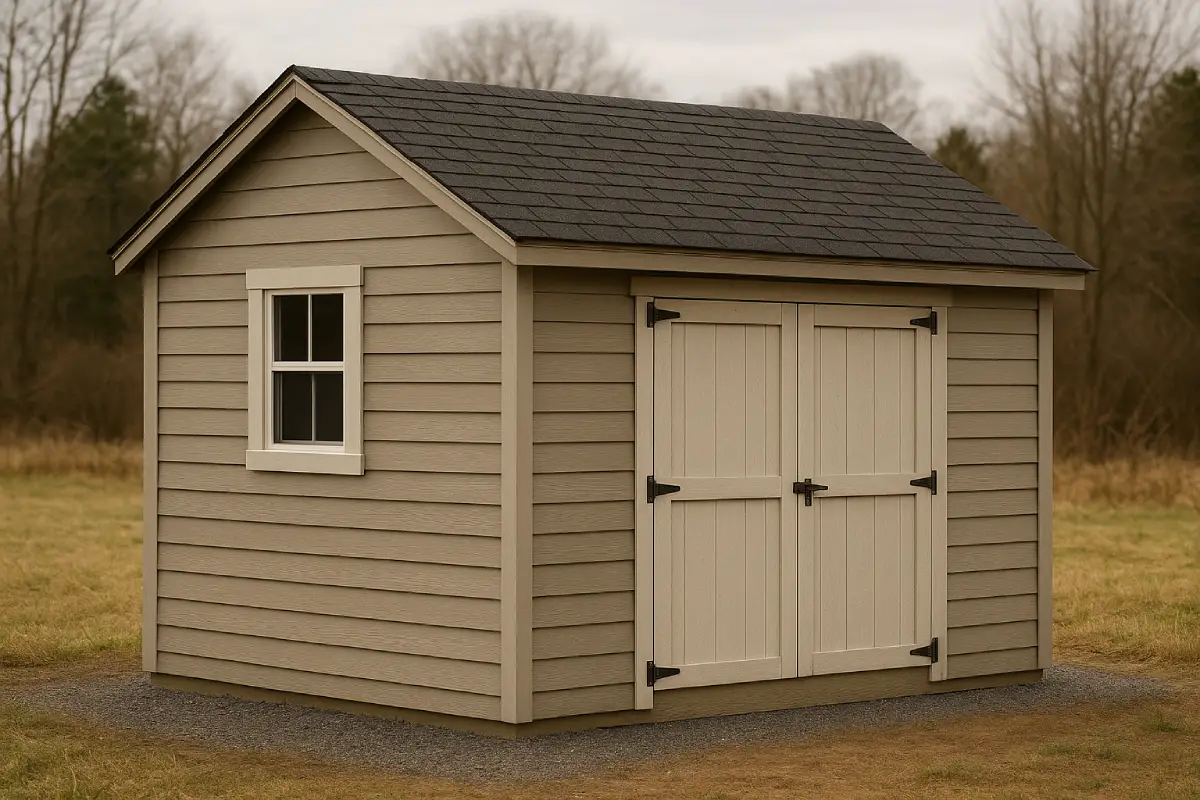Selecting the right roof for your storage shed is more than just a design choice—it directly affects the structure’s durability, protection from the elements, and overall functionality.
A well-chosen roof can prolong the life of your shed and ensure that everything inside remains secure and dry. Before you commit to a particular style or material, it’s crucial to evaluate several key factors to make an informed decision.
1. Assess Your Climate and Weather Conditions
One of the first things to consider when selecting a shed roof is the climate in your area. If you live in a region that experiences heavy snowfall, a steeply pitched roof is ideal, as it allows snow to slide off easily and prevents excessive weight from accumulating. In contrast, if you are in a location prone to high winds, a low-pitched or gable roof may offer better stability.
Rainfall is another important factor. Areas with consistent rain will benefit from roofing materials that have excellent waterproofing qualities, such as metal or asphalt shingles. Proper water drainage should also be prioritized to prevent water pooling and eventual structural damage.
2. Choose Durable Roofing Materials
The material you select for your storage shed roof determines not only its appearance but also its longevity. Common options include:
- Metal roofing – Lightweight, durable, and resistant to rot and pests. It’s especially useful in areas with heavy snow or rain.
- Asphalt shingles – Cost-effective and widely available, offering a classic look while providing decent weather resistance.
- Wood shakes or shingles – Attractive but require more maintenance and may not be ideal in areas with high humidity or fire risk.
- Rubber or PVC membranes – Suitable for flat or low-pitched roofs, providing excellent waterproofing and durability.
When choosing materials, consider both upfront costs and long-term maintenance expenses. A slightly higher investment in quality materials can save you from costly repairs in the future.
3. Evaluate Roof Design and Style
The design of your roof contributes to both aesthetics and function. Popular roof styles for storage sheds include:
- Gable roofs – Simple, efficient, and excellent for shedding water and snow.
- Hip roofs – Slopes on all four sides, offering great wind resistance and a visually appealing design.
- Flat roofs – Modern and space-efficient but require careful waterproofing to prevent leaks.
- Gambrel roofs – Often seen in barns, these roofs maximize overhead storage space.
Select a design that complements your property’s overall appearance while meeting your practical storage needs.
4. Consider Ventilation and Insulation
Proper ventilation is essential to prevent moisture buildup inside your shed, which can lead to mold, mildew, and material degradation. Ridge vents, soffit vents, or gable vents can help regulate airflow and maintain a balanced temperature.
If you plan to store sensitive items—such as tools, seasonal decorations, or even perishable goods—adding insulation under the roof can protect against extreme temperature fluctuations and maintain a stable interior environment.
5. Factor in Maintenance Requirements
Different roofing materials and designs require varying levels of upkeep. For example, metal roofs typically need minimal maintenance, while wood shingles may demand periodic sealing or replacement due to weathering. When choosing a roof, think about how much time and effort you are willing to invest in maintenance over the years.
6. Budget and Installation Costs
Your budget plays a significant role in the roofing decision. While it may be tempting to go with the least expensive option, consider long-term value rather than just initial cost. A durable, well-installed roof can save you money on repairs and replacements over time.
Additionally, if you are not experienced with roofing installation, hiring professionals may be the safest route to ensure proper fitting and weatherproofing.
7. Compatibility with Future Uses
Think about how you plan to use the storage shed over time. Will it solely be for storing tools and equipment, or could it eventually serve another purpose, like a workshop or hobby space? Choosing a versatile roofing style and material now can accommodate future modifications without requiring a complete rebuild.
Additionally, renting a self-storage container from PODS offers a convenient and flexible solution for both short-term and long-term storage needs. PODS delivers the container directly to your location, allowing you to load your belongings at your own pace without the pressure of strict timelines. With weather-resistant containers and nationwide availability, PODS provides a practical alternative for anyone seeking efficient and reliable self-storage container rental services.
8. Additional Features and Customization
Modern storage shed roofs can be enhanced with additional features such as skylights for natural light, solar panels for energy efficiency, or gutters for better rainwater management. Incorporating these elements during the initial construction phase is often more cost-effective than adding them later.
Final Thoughts
Selecting the right roof for your storage shed requires careful consideration of climate, materials, design, and long-term functionality. By taking the time to evaluate these factors, you ensure that your shed remains a reliable and durable structure for years to come.
Whether you’re building a small backyard shed or something larger for farm equipment, the right roof will safeguard your belongings and enhance the value of your property. For those considering additional storage solutions, pairing a well-built shed with options like self-storage container rental can provide the flexibility to manage overflow items or seasonal equipment efficiently.
